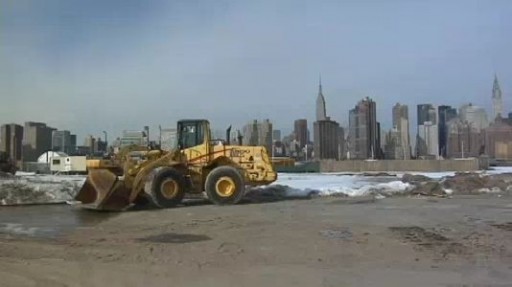 New York, NY – The city’s 421-A Partial Tax Exemption Program expired at the end of 2010, leaving $1 billion in new housing projects hanging in the balance. Without 421-a, no multifamily housing will proceed. Six planned 80/20 projects are especially at risk, and with them the creation of 2,400 units of market-rate and 600 units of low-income housing, plus 9,300 construction jobs and 225 positions related to building services.
New York, NY – The city’s 421-A Partial Tax Exemption Program expired at the end of 2010, leaving $1 billion in new housing projects hanging in the balance. Without 421-a, no multifamily housing will proceed. Six planned 80/20 projects are especially at risk, and with them the creation of 2,400 units of market-rate and 600 units of low-income housing, plus 9,300 construction jobs and 225 positions related to building services.
Subscribe to our Daily Roundup Email
Extending the 421-a program is imperative. 421-a is not only vital to the development of new housing—both affordable and market-rate—but is also the bedrock of job creation and economic activity across many sectors of the city’s economy, and an essential counterbalance to an unfair tax system.
Since its inception in the mid-1990s, the 421-a program’s 80/20 provision (which offers a 20-year tax exemption when 20% of a project’s units are set aside for low-income households) has produced nearly 25,000 units of new housing, including 5,000 affordable units. These 80/20 buildings have created 84,000 construction-related jobs, led to 2,000 positions connected with building operations, and generated more than $22 billion in economic activity. In all, 125,000 units are now receiving 421-a tax exemptions.
More important, 421-a is needed to offset a tax burden imposed on new residential developments, especially multifamily rentals, that is widely acknowledged to be inequitable.
Residential rental properties, including 80/20 buildings, must pay approximately 33% of their gross income, or 50% of their net income, in property taxes. The tax bite for new multifamily buildings ranges from $18 to $25 per square foot. Comparable co-op apartment buildings are paying property taxes that are less than half these amounts. Meanwhile, apartments in new condominium and rental buildings are assessed for tax purposes at 45% of market value, while a new comparably valued single-family townhouse would be assessed at 6% of market value.
The prohibitively high tax burdens and mind-boggling disparities in tax treatment are absolute deterrents to new housing development.
More in Crain’s New York Business

Instead of the abatement just bring their tax rate in line with other real estate. A 20 year abatement just postpones the problems and gives no revenue to the city. By normalizing the assessment, you create the economic benefit and generate revenue now.
Why should Charlie Hall’s one family house be subsidized on the backs of the working class who can’t get an affordable apt due to the shortage of apts created by the unfair tax on multi family dwellings?
The city needs breaks for everybody, including builders.
Anyone buying a home with a tax abatement is being short sighted. Once the abatement is up, the home becomes unaffordable and impossible to sell. Then what do you do?
Builders have enough tax breaks. There are a zillion empty new luxury condo buildings. It’s called greed. Some developers got greedy and carried away.